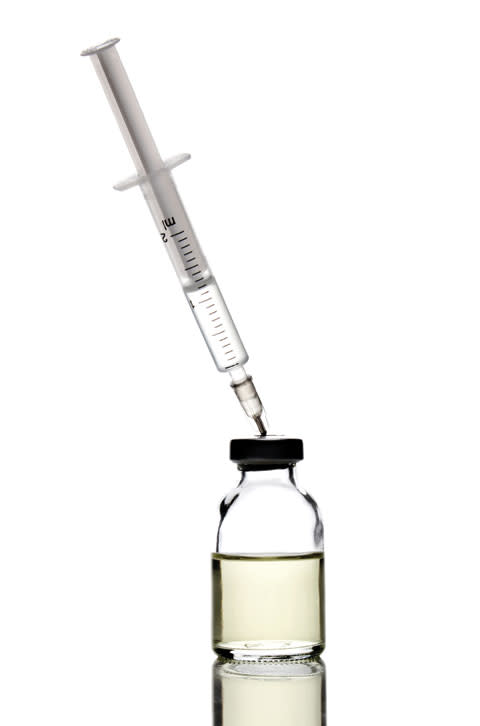Everything You Need to Know About Fat Grafting
The face is the key battleground in the war against aging. We all know the obvious signs. Crow’s feet. Laugh lines. Frown lines. Wrinkles around the mouth. Drooping brows and cheeks. Thinning lips. Jowly jaws. Sagging necks. Sagging everything. The face can also suffer collateral damage in the war against weight. Spend enough time in the gym and, yes, you will be thin. And the skinnier you are, unfortunately, the older your face will look.
There’s no quick fix. Skin problems are more than skin deep. Sometimes, it’s what’s below the surface that counts. Or, more accurately, what’s not there. In this case, fat.
Picture a pinchable baby face. What’s holding the skin up? Subcutaneous facial fat and collagen. By the time this “baby” is in her 20s, these natural support structures begin to diminish. It’s called a loss of volume. As the aging process continues, the loss does, too. The lines of age are the result. And there are casualties on other battlefields, too. Loss of fat and collagen can also lead to wrinkles and sagging of the hands, breasts and buttocks.
Can you reverse the process—essentially put fat back?
Yes, actually.
It’s called fat grafting. Although the procedure has been around for decades, it’s had a sudden burst in popularity and is even supplanting some surgical facelifts. To help explain why, we spoke with three prominent regional plastic surgeons: Dr. Scott J. Engel, a board-certified plastic surgeon at Sarasota Plastic Surgery Center; Dr. Marguerite Barnett, a board-certified plastic surgeon and founder of Sarasota Institute of Plastic Surgery; and Dr. Christopher Adamson, a board-certified plastic surgeon specializing in cosmetic surgery and the founder of Adamson Plastic Surgery.
A Crash Course in Fat Grafting
Q | What is fat grafting?
A | In the words of Dr. Engel, “Fat grafting is a surgical procedure in which fat is removed from one area of the body and then transferred, or grafted, into another area.”
In other words, it’s a fat transplant. And the patient is both the donor and the recipient.
“Since this is the patient’s own tissue, rejection doesn’t occur,” explains Engel.
It’s surgery, of course, though very minor. The incisions are small. The canula that harvests the fat and needle that re-injects it are also both tiny. But results can be major. Performed successfully, fat grafting fills in depressed areas, minimizes nasolabial folds, smoothes hollows under the eyes and enhances cheekbones and jaw lines.
According to Dr. Adamson, it’s a safe technique with long-lasting results.
“Fat grafting can be used on almost any part of the body, including face, breasts, hands, buttocks,” he says. “I use it most commonly for restoration of facial volume. It’s very useful for restoring the volume lost from the aging process in the temples, cheeks and lips.”
Q | Who should consider it?
A | In Dr. Barnett’s opinion, anyone who’s fed up with the drooping and sagging regions of their face. She also highly recommends it for patients undergoing breast reconstruction and for those who wish to smooth over telltale signs of breast implants. Barnett says that she’s seeing an increased use of fat grafting over other more traditional cosmetic surgeries, such as surgical facelifts.
“While traditionally cosmetic surgeons have tightened the skin to correct sagging, this can sometimes lead to an unnatural appearance,” she says. “Fat grafting can lessen the need for more invasive, tightening procedures and result in a more natural and youthful appearance.”
As Adamson sees it, it’s all about the illusion of youth.
“Full, round temples, cheeks and lips create the appearance of youth, health and vitality,” he says. “Similarly, volume augmentation of the breasts, buttocks and backs of hands restores or creates desirable contours.”
Success Story
If you want to know more about the illusion of youth, just ask Pam Auen. Last November, Adamson performed a fat grafting procedure on her. Auen was 63 at the time.
“I’m a Florida girl and I grew up with the sun,” she says. “As a result, my skin was wrinkled, sagging and showed signs of extreme skin damage.”
Auen had originally visited Adamson for skin cancer issues. Once these had been resolved, she decided to do more.
“Honestly, I got tired of what I saw in the mirror,” she says. “Instead of ignoring it, I decided to do something about it.” After consultations with two plastic surgeons who advised full facelifts, she came to Dr. Adamson. He felt that Auen was the perfect candidate for fat grating and a phenol peel. (This chemical skin-peel procedure penetrates deep into the skin to treat severe wrinkles, sun damage and lines and wrinkles around the lips and chin.)
Auen had both procedures performed at the same session. Today, she admits that her recovery wasn’t a cakewalk. “I had the procedures right after Halloween,” she says. “Dr. Adamson told me that was unfortunate timing because I was going to look like a monster for a few days.” Auen stayed in her guest cottage during her recovery, “to spare my husband the creature feature.” During that self-imposed exile, she refused to look in the mirror. Within three days, though, Auen felt much better. A few days later she was “back to normal.”
As to her looks?
“People tell me I look 20 years younger, and I agree,” she says. “If you compare my pre- and post-surgery photos, you wouldn’t believe I’m the same person. My entire face has tightened—and it’s a natural appearance, not that tight, post-facelift look you often see. It’s just that all the sagging in my face has vanished. I could erase more lines in my forehead with Botox, but I’m so happy with my new face, I don’t want to do anything else.” Even better? Auen says the procedure was “far more affordable than a traditional full facelift.”
Most Popular Derma Fillers
Injectable cosmetic wrinkle fillers are soft tissue fillers approved as medical devices by the Food and Drug Administration (FDA).
Juvederm Facial Filler
Made of a hyaluronic acid gel, Juvederm is a naturally occurring substance in the skin that contributes to volume and hydration. Juvederm is designed to temporarily correct moderate to severe facial wrinkles and folds. Juvederm is made by Allergan, the makers of Botox.
Restylane Facial Filler
A non-animal, biodegradable gel composed of hyaluronic acid, Restylane is a soft-tissue dermal filler that adds volume to the skin through tiny injections, smoothing facial folds and wrinkles in areas around the mouth and eyes.
Sculptra
An injectable made of synthetic polylactic acid contained in microspheres, Sculptra is the first FDA-approved injectable for the restoration of lost facial volume (correction of lipoatrophy) in people with HIV infection.
Captique
Utilized for filling moderate to severe facial wrinkles and folds around the nose and mouth, it’s a soft tissue filler that adds volume to certain areas of the face; and it’s derived from non-animal-based hyaluronic acid.
Collagen (Zyplast/ Zyderm)
A soft-tissue dermal filler made from purified cow skin used to fill wrinkles, lines, and scars on the face. Collagen is a naturally occurring protein that supports various parts of the body, including skin, tendons, and ligaments; it will eventually be absorbed by the body.
Hylaform
Fills moderate to severe wrinkles around the nose and mouth. Hylaform is a dermal filler that has been chemically modified from hyaluronic acid; it’s designed to temporarily smooth the surface of the skin.
Radiesse
A synthetic dermal filler made of calcium hydroxyapatite and is used for the correction of moderate to severe wrinkles and folds. This injectable is a longer-lasting filler because the body forms collagen around the microspheres, adding bulk to the injected areas.
Resources: American Society of Plastic Surgeons: plasticsurgery.org; American Academy of Facial Esthetics: facialesthetics.org; Food and Drug Administration: fda.gov/ForConsumers/ConsumerUpdates/ucm049349.htm
Science—and Surgical Skill
While the results may look like magic, the procedure is all about science and skill. According to Barnett, the sensitive approach is what sets the best plastic surgeons apart. “Fat is living tissue with its own blood supply,” she says. “Whenever fat is harvested and transplanted, some portion will be lost. My current thinking, based on the latest research, is to harvest fat where the patient most wishes to lose it and treat it as gently as possible. Even so, as many as one out of three patients will lose the transplanted fat volume over time.”
Adamson points out that the survival of transplanted fat cells depends on one thing: whether they find and grow a new blood supply. “The fat cells that do find a blood supply will live in the new area forever,” he says. “The fat cells that don’t will be absorbed by the body.” He adds that fat cell survival depends both on the surgeon’s ability and the area where the cells are injected. Certain regions of the body with the least mobility and best blood supply offer the highest rates of fat graft survival, especially the cheeks and temples. “Fat grafts, on average, have a 60 percent survival rate,” he says. “Your surgeon can compensate by injecting extra volume at the time of grafting to account for the expected losses.”
Saving Face
While the face is the main candidate for fat grafting, it isn’t alone. Fat grafting on the buttocks (aka a “Brazilian buttock lift”) is increasingly popular, and causing worldwide derriere inflation. The procedure can also rejuvenate wrinkled hands, by creating a smooth, subcutaneous surface over tendons and blood vessels. Breasts can also benefit. Here, Barnett advises a cautious approach.
“Fat injected into the breast area may be reabsorbed by the body over time, causing the breast to lose volume,” she says. “Also, a fat graft that fails to find a blood supply becomes dead fat. In the breast, this can cause a hard lump or scar that mimics breast cancer.” The best safeguard against this? Wearing a cumbersome vacuum bra device for 10 weeks prior to surgery. “Beware if your surgeon is offering grafting without this technique,” Barnett cautions. “Without it, the procedure is unlikely to work and may cause big problems.”
Fat Grafting Caveats
The three physicians we spoke with were uniformly enthusiastic about fat grafting. They praised its results and noninvasive nature. That said, they didn’t sugarcoat its downsides. Fat grafting comes with the complications, risks and recovery time of any surgical procedure. Where artificial fillers are dissolvable, your own fat isn’t, which means you can’t reverse the procedure without additional surgery. Weight gain can bloat a plumped face; weight loss can lead to reabsorption of the surgically added fat.
Bottom line? According to Engel, fat grafting isn’t for everyone. “Some patients have too much loose skin,” he says. “Simply trying to fill up a patient’s face, breast, or buttocks with fat alone may result in a large, unnatural appearance. In such cases, traditional skin excisions may be necessary.” He adds that patients should seek consultation from a surgeon certified by the American Board of Plastic Surgery before any work is done. “Always do your homework,” he says. “If you’re considering plastic surgery, research your doctor first.”
The good news?
The risks are there, but the risks are minor. Do your homework, as Engel advises. Make sure you’re in the hands of a qualified plastic surgeon. If you are, fat grafting is a safe, routine procedure with a very short recovery time.
No-Fat Fillers
Although fat grafting does wonders to treat facial volume loss with results that easily last two or more years, conventional derma fillers, including Juvederm, Restylane, Radiesse and Sculptra, can also work wonders. But most of these have a short shelf life and must be repeated two or more times a year. (Radiesse, used mostly in the cheeks, chin and jaw line, lasts longer—typically a year to 14 months.) Most surgeons will advise you to stay flexible. They’ll often combine fat grafts with synthetic injectable dermal fillers. The approach depends on a patient’s specific needs.
When it comes to dermal fillers, Barnett advises against trying the hottest trends until they’re proven to be reliable. “My philosophy is to be conservative,” she says. “Don’t be the first to jump on a trend. I get over two dozen emails daily advertising the hottest thing to revolutionize the field of cosmetic aesthetics. I generally wait a year or two after a new product launch and then listen to the grapevine for problems before I start using it.” The newest filler she’s using is Juvederm Volumna, a long-lasting product designed to compete with cheek implants and Sculptra.
Face the Facts
What’s right for you depends on you. What are you looking for? If your goal is smoothing out minor facial wrinkles and brow creases, dermal fillers will do just fine. If the loss of volume throughout your face is causing excessive sagging, fat grafting may be the best way to rejuvenate your appearance. Find a board-certified plastic surgeon and discuss your options.
Ultimately, fat just might be your new best friend.





